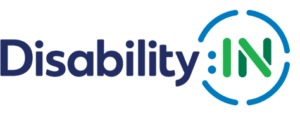A robust Accessibility Statement is an important component of your organization’s digital accessibility plan. A sincere and well-drafted statement can build customer loyalty and help avoid lawsuits by addressing issues before legal help is sought. An Accessibility Statement is always best practice. For global organizations, an Accessibility Statement may be required.
This resource provides information about Accessibility Statements. It is not intended as legal advice.
Include contact information for providing accessibility feedback
Every Accessibility Statement should include contact information so customers and members of the public and other visitors to your site can report accessibility barriers or provide other feedback. Consider the following when providing contact information:
- Include both a phone number and a digital method of contact (either form or email address)
- Double check that any form used for submitting accessibility feedback is accessible and usable. Forms should satisfy the current version of the Web Content Accessibility Guidelines (WCAG) (WCAG 2.1 as of August 2020) and be tested with a variety of assistive technology / browser / operating system combinations, ideally by people with disabilities, to ensure usability.
- Ensure that employees answering the phone line or receiving information from an online form or email are trained to either appropriately respond to inquiries or complaints or escalate to someone who can.
- Develop a policy for handling / resolving feedback coming in through the contact form / phone number. Consumers should be told when to expect a response and how their feedback will be handled.
- Make the Accessibility Statement and contact information easy to find. Best practice dictates that site (and app) users can find the Accessibility Statement (including contact information) in the following locations:
- Website footer on every page (including home page)
- Help page on website(s) and mobile applications
Avoid canned language and consider the Accessibility Statement a branding opportunity
Some companies sell canned Accessibility Statements. Using language that can be found verbatim elsewhere on the web is not recommended. Instead, use the opportunity of an Accessibility Statement to speak honestly about your accessibility commitment. If possible
- Explain to your readers how accessibility fits into your organization’s goals and corporate values.
- Talk about some specific steps your organization has taken to bake accessibility into your digital and other offerings and identify particular site enhancements that were designed for people with disabilities
- Include information about other products and services that benefit the disability community, including policies and programs on built environment accessibility.
- If you have a disability employee resource group (ERG), include mention of the group and, if available, a link for visitors to learn more. Referencing your disability ERG in the accessibility statement highlights that your organization values its employees with disabilities, an important element of your accessibility commitment.
- Reference the accessibility standard used by your organization. This should be the current version of the Web Content Accessibility Guidelines (WCAG) (WCAG 2.1 as of August 2020)
Here are a few examples of Accessibility Statements from Disability:IN partners to get you started (see more resources below)
- Accenture accessibility statement
- Fidelity Accessibility Statement
- Microsoft Accessibility Statement
Be cautious about tying your Accessibility Statement to a particular vendor’s tools
Related to using a pre-packaged Accessibility Statement is referencing a specific software tool that claims to deliver accessible experiences. Typically that software is licensed and only provides any type of service during the time the license is active.
Best practice dictates that websites be designed and built accessibly for all users. Websites should not require a site visitor to download specific tools (as some vendors require) or select a particular overlay (as others do) in order to have an accessible experience. In addition, putting vendor and tool names in an Accessibility Statement provides free advertising for companies that the public or your customers may have concerns about.
For more information of accessibility community concerns with specific types of vendor software tools that we recommend not be used or highlighted in Accessibility Statements, Honor the ADA: Avoid Web Accessibility Quick Fix overlays links to technical articles by accessibility consultants.
Check global requirements for Accessibility Statements
If your organization operates outside the United States, be aware of Accessibility Statement requirements in global accessibility legislations. For example, here are Accessibility Statement resources for the UK and the European Union:
- Guidance from the UK Government titled Make your website or app accessible and publish an accessibility statement. This resource includes a sample accessibility Statement based on the EU model statement (see link below)
- EU Commission implementing decision on establishing a model accessibility statement under the Web Accessibility Directive
- Learn more about global accessibility requirements at the Disability:IN Global Directory, The W3C Web Accessibility Initiative Law and Policy Page, or the Law Office of Lainey Feingold’s Global Digital Accessibility Laws page.
Double check that the Accessibility Statement is accessible and current
It goes without saying that any Accessibility Statement should be accessible. As with the contact form described above, make sure the page itself meets accessibility requirements and is tested either manually or with a combination of a software testing tool and manual testing.
As with other evergreen pages on your site, implement a system for ensuring your page stays current.
Further resources on Accessibility Statements
Here are some resources to help on your journey to develop a meaningful Accessibility Statement for your site visitors.
- Developing an Accessibility Statement portal from the Web Accessibility Initiative of the World Wide Web Consortium. Included in this suite is an Accessibility Statement Generator
- Law Office of Lainey Feingold’s Accessibility Statements page (includes examples of Accessibility Statements in a variety of sectors and other relevant links.)
- MicroAssist List of Accessibility Statements
For questions about this Disability:IN resource, contact accessibility@disabilityin.org.
